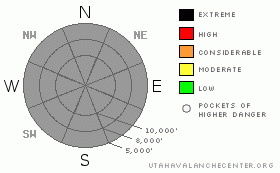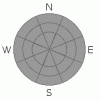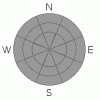 |
We have ended our avalanche advisories for the season.
This does not mean that there will be no more avalanches. It just means that we have run out of money and our forecasters are heading off to their summer jobs, with a short vacation in between.
I have provided some general avalanche advice and weather links below, but first….
Thank you:
We want to thank everyone for a number of things: First, thanks for staying safe. We had a difficult season with an especially dangerous, early-season snowpack. Although the avalanche cycle claimed four lives, the vast majority of you recreated safely by being avalanche educated and by regularly consulting the advisory. Second, we would like to thank everyone for sending in observations. There are only a few of us, so we certainly can’t be everywhere at once. The quality of the advisory depends directly on the amount of feedback from the community. Each day, 10-20 of you would send us observations and photos. This kind of community support is what motivates us to wake up at 3:00 am.
Thanks for Funding Support:
Thanks to everyone who financially contributed this season. We had an unexpected budget cut this season and several valued partners stepped up to the plate to keep us from cutting back services. Namely, the non-profit group, Friends of the Utah Avalanche Center, raises private funds for avalanche forecasting and education in Utah. For the first time, private funding represented our largest funding source. Because of your financial support the FUAC contributed around $118,000 to avalanche forecasting and education in Utah. A big thanks to the Unified Fire Authority, who filled in a big chunk of our funding gap. Finally, the Forest Service Recreation Fees program filled in the last of our funding gap, plus the Uinta-Wasatch-Cache National Forest funded our forecast to the end of April. Of course, we could not do this without our regular, longtime, funding partners, which include: Utah State Parks, Utah Public Safety, Salt Lake County and the city of Sandy. Of course, this is a Forest Service program and about a fifth of our funding comes from a yearly, regional earmark and we thank Doug Abromeit, Liz Close and our boss, Larry Lucas for their unfailing support. We are co-located with the National Weather Service, who provide office space and unsurpassed, weather forecasting skill, infrastructure and the regular company of dozens of very smart people, who are essential in making our forecasts better and more accurate. Last, but not least, thanks to all the businesses and individuals who donated, especially Black Diamond, Backcountry.com and the generous ski resorts who donated hundreds of lift passes, the sales of which directly benefited the FUAC. We will have a more complete list in our upcoming Annual Report (sometime in May). Click HERE for a list of sponsor logos and links.
We are trying to raise funds for continued web site development over the summer. If you wish to contribute to the cause, you can donate to the Friends of the UAC. |



